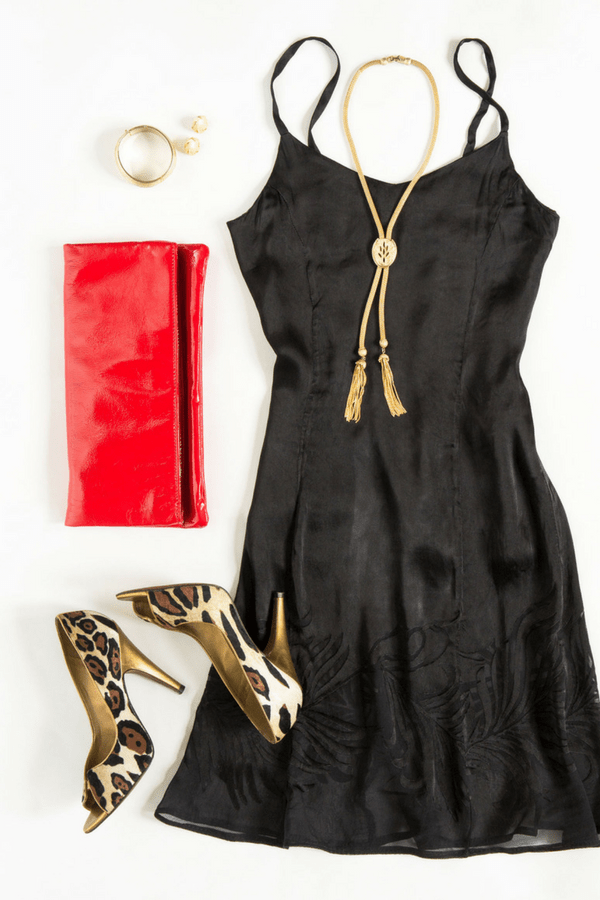Looking for easy hairstyles for lazy days? You’ll notice a lot of these hairstyles are called “messy” something. That’s because some days I’m in a rush and all I want to do is use dry shampoo, throw my hair up and go. These cute easy hairstyle are perfect for lazy days, fancy dates, or when you’re running late and rushing out the door. Here are 10 easy hairstyles for lazy days:
1. Half-up crown braid

Pretty as a princess, with no hassle? Check. Start with a center parting, a grab a section of hair close to your hairline. Start braiding this, angling slightly back and down, and secure. Repeat on the opposite side. Pull braids behind your head, close the base of your skull, and layer them on top of each other.Hide the ends of the braids by tucking them in, and pin to secure.
2. Scarf cover-up

For those days when you’d rather hide your hair than try and do anything fancy with it, this is a style for you. Secure your hair in a high, mess bun. Take the ends of your scarf in either hand, and place the middle of the material at the nape of your neck. Wrap the scarf over your ears, and cross at the front of your head, creating a twist in the middle of your hair. Then secure the scarf with bobby pins.
3. Easy chignon

Classic and timeless, this chignon makes you feel fancy in less than five minutes. Separate hair into three sections – left, right, and back. Twist the left and right pieces back behind your ears, and join with the back section, securing in a low ponytail. Make a gap in the hair right above the grip, and pull the ponytail up and through the gap, creating a twist. Tuck the remaining hair up and over the original twist, securing with bobby pins to create a low bun.
4. Braided messy bun

Easy 3-step hairstyle! Simply section your hair, create a bun, loosely braid the front two sections, pulling pieces out here and there to make the braid messy and give it volume, then cross the braids over the bun and secure with bobby pins.
5. Messy crossover pony

Possibly the easiest and quickest style on the list, and one that I love, because it looks effortless (and is!). Separate hair into two front sections and one back section. Tease the back section (or use dry shampoo for volume) and secure in a ponytail. Take the right front section and cross it over the ponytail so it rests over the grip. Repeat on the left side, so both pieces of hair are crossed over the grip. Pull the pieces of hair around and under the ponytail, and secure. Voila, a crossover ponytail.
Related Post: How To Do Cat Eye Eyeliner | Beauty School
6. Headband up-do

Do you ever have an issue with your headband sliding off your head? Not so with this style! Place an elastic headband over your hair, and separate your hair into three sections, bringing two lengths of hair over each shoulder and leaving one piece down your back, tying it off lower down to keep it in place. Pull this tied-off piece of hair through the back of the headband, hiding the elastic, and pin in place. Then twist both front pieces of hair and wrap over to opposite sides of the bun, further hiding the elastic, and pin in place. One of our most favorite easy hairstyles for lazy days!
7. Khaleesi inspired twist

The actress might have her own stylist, but if you want hair inspired by the Mother of Dragons, you don’t need one! Start by tying the top layer of your hair back, half-up-half-down. Make a gap in your hair right above the grip, and pull your hair over and through, so your hair now has a simple twist. Grab two more sections of loose hair, and create second ponytail beneath the first. Repeat the first step, making a gap and looping your hair through, creating a second twist.
8. Braided ponytail

This style perfectly transitions from casual day to fancy night! And you don’t even need to know how to french braid (although it looks like you do). Doing one side of your hair at a time, begin to twist the two sections, adding more pieces of hair to each piece of the twist as you go, until you reach the nape of your neck. Gather both twisted pieces into a low ponytail.
9. Twisted braided bun

Begin by securing your hair in a high ponytail. Separate your hair into sections, two for thin hair and three if your hair is thicker. Twist or braid each section, and secure with a grip. Then take the sections and wrap them around the base of the ponytail, layering each braid to create a big, voluminous top knot!
10. Boho fishtail braid

This hairstyle is great for keeping your hair out of your face and messy hair in check while still looking cute and put-together. We love that she combined a fishtail braid and a Dutch braid.
Related Post: 5 Things Stylish Women Secretly Do Everyday
Our go-to fishtail braid style for lazy days:
With your hair in a side-parting, begin to french braid the front section of your hair along your hairline, slowly incorporating more hair into the braid until you reach your ear. Pin this braid in place, and switch sides. Gently twist your hair on this side and pull it round to your opposite shoulder, where you can begin to fishtail braid both lengths of hair. Tie off the braid, and gently pull at the sections to loosen the braid for a messier look.


















